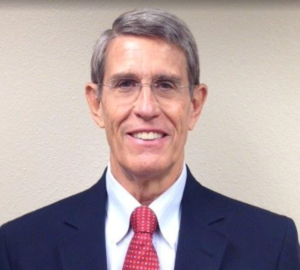
Dr. Scott Robertson came to Scottsdale forty years ago, having been recruited to build a cardiovascular center. He’s been here ever since. The West, you might say, was always near and dear to his heart, as were horses. We caught up with him recently to ask him about his life, his long relationship with the Cowboy Artists of America, his thoughts about the American West and Western art, and his work as a Western Spirit Board Member.
Q: Tell us a little bit about your upbringing.
A: I initially grew up in a ranching community in Colorado and was involved with horses and ranching from an early age. At the age of 10, we moved to a small village on the Amazon river in Brazil.This was also a horse culture because there were few vehicles and horses did most of the work. Horse races were important community events and I raced my horse in the major ones. These were serious events with cash prizes and I was the only kid in any of the races. I was homeschooled by my mother and eventually went to the states, initially for boarding school, then Harvard. Following Residency and Cardiology Fellowship, I was recruited to build the Scottsdale Cardiovascular Center. I was attracted to Arizona because I could get back to ranching and horses in addition to the professional opportunities which were also good for my wife, who is a Pediatric Ophthalmologist.
Q: That’s an incredible journey. How did you become involved with the Cowboy Artists of America?
A: Some of the CAA artists were my patients. I was a kindred spirit, you might say. We shared many interests. Eventually, they asked me to be an honorary member of the CAA and I was asked along on their trail rides as both a member and physician. It’s been a wonderful experience, getting to know and having become friends with great artists like Fred Fellows, Bill Owen, Martin Grelle, John Coleman, Tom Browning, Bruce Greene, and so many others. And I’ve had the opportunity to see some of the greatest ranches in the West, such as the 6666 in Texas. The CAA artworks are art, but they’re also history. They’re real, meticulous in detail, a blueprint for how people did and do things on a ranch, and they document a way of life.
Q: You must have a good eye for Western art. Do you have a favorite artwork in your own collection?
A: I am proud to own Bill Owen’s last painting, which he did for me. It’s a classic study of something significant that only ranchers and cowboys would fully appreciate. In the painting, the cowboy is riding right at the viewer, roping a corriente steer. The corriente is a small, primitive breed, fast, agile, used often in rodeos and roping. As an aside, corriente beef is very heart-healthy: grass-fed, low-fat, and doesn’t lead to inflammation. But what Bill Owen is painting is a smart steer, one that eludes the roundup. Every so often, the cowboys head out and try to catch them. Bill wrote me a letter describing this that accompanies the painting. Few artists can capture the motion of animals coming right at you, and this painting, in that regard, is a tour de force.
Q: What’s the most interesting conversation you ever had with one of the CAA artists?
A: A famous artist and I were riding together and I observed, “You rarely have horses in your art.” He thought about this and replied, “That is a death knell in Western art. You have to do a horse perfectly. A horse has got to pass muster with the cowboys and horse people.”
Q: How did the CAA lead you to Western Spirit and how would you describe your role on the Board?
A: In a kind of natural progression, I had patients on the Museum Board. Like the CAA artists, they saw me as a kindred spirit, and as a member of the CAA, they felt I would be an asset to the Board. I see my primary role as an ambassador and advocate, someone who is in a position to help steer collections and exhibitions to Western Spirit that might otherwise go elsewhere. A great deal of philanthropy in the area goes to the Phoenix Art Museum and the Heard, but I feel our museum—because of its unique emphases on all elements of the West—is complementary, adds diversity, and helps preserve a and tell the story of a way of life that has a host of forces arrayed against it. And yet, think how popular cowboys are in Europe and South America, and how quickly a single television show like Yellowstone can bring ranching culture back into the public eye.
Q: How do you see Western Spirit’s past and future?
A: We’ve benefited greatly from collectors like Tim Peterson and Abe Hays. Their collections jump-started the museum. We have to keep creating programming, like the Lewis and Clark exhibition, and the breathtaking Edward Curtis photographs, that fascinate people. Our connection with Arizona State University will be crucial going forward, and we have to become a museum of the Greater West, not just Scottsdale and Arizona. Where is the West, as a whole, going, and what is our role as a cultural institution? We need to be a cultural and academic source of knowledge about the “West,” where scholars, as well as collectors and tourists, can find a home.
